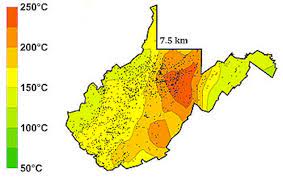From an Article by David Beard, Dominion Post, April 9 & 10, 2022
WV-Department of Environmental Protection permitting issues discussed
The Dominion Post sent WV-DEP some questions relating to issues raised during the permitting process, including during a public hearing held in January. People were concerned about the vague reference to a data center in Marion Energy Partners’ application, and wondered why DEP’s DAQ didn’t demand more specifics.
DEP said, “The application Marion Energy Partners submitted only indicated they were planning to construct and operate a data processing facility consisting of four natural gas-fired engines to generate electric power for the facility. It did not indicate they were going to mine bitcoin.
Regardless, the application was for the emission sources – the four engines – which is the only aspect of this facility that the WVDEP’s DAQ can regulate. MEP is required to construct the facility in accordance with their permit application and meet the emission limits in the permit when they operate.”
DEP continued, “As mentioned, the DAQ’s jurisdiction begins and ends with the emission sources and it cannot regulate or permit a facility based on how it will use the electricity it generates. Please note that the DAQ has permitted several similar emission sources for facilities across the state, ranging from hospitals to government buildings.”
MEP/NNE will have to monitor its emissions from the site and provide the data to DAQ. The Dominion Post asked how DAQ will verify the data and hold MEP/NNE accountable.
DEP said, “MEP will have to perform stack testing within 180 days of startup and every three years or 8,760 hours of operation, whichever occurs first, and report the results to the DAQ. Stack testing is conducted by a third party contractor. MEP is required to obtain prior approval of a stack test protocol, and provide an opportunity for the agency to observe any required stack test.
“MEP is also required to maintain records of operation, and pollution control device parameters, and periodic fuel analysis. The company has to certify the accuracy of reported information. The DAQ will conduct periodic inspections. The facility is a minor source and is required to be inspected at least once every three years.
“The DAQ does not have staff on site when the facility starts up, however, the facility is required to notify the agency within 15 days of the startup of each engine. DAQ staff is notified of, and has the opportunity to observe, the initial stack test which is required to be conducted within 180 days of startup to confirm the facility is operating within permitted limits.
Regarding possible noise pollution, DEP said, “The DAQ has no jurisdiction over noise. Noise is an issue of local jurisdiction.”
The geothermal project promises to drill a deep exploratory (vertical) well
WVU announced its geothermal research project last August (watch for our Progress special section for a full story on the project). While most geothermal reservoirs are located in the western part of the country, WVU said, there is a “hot spot” below north-central West Virginia.
WVU was awarded a $7.5 million Department of Energy grant to drill an exploratory well at NNE’s industrial park site, where MSEEL is already underway. WVU Energy Institute Assistant Director Samuel Taylor told The Dominion Post this is an exploratory well to see what’s down there and what the potential is for future development.
The well will be a vertical bore – with no horizontal offshoot – going down about three miles. No energy will be produced from the well, he said.


{ 1 comment… read it below or add one }
A temperature of 200 degrees Centigrade is 396 degrees Fahrenheit. Water boils at 100 C which is 212 F.
Try this: 100 C divided by 5 is 20 which is multiplied by 9 to get 180, then add 32 to arrive at 212 F.
You try this, 200 C divided by 5, then multiply by 9 and add 32.
That’s it, 396 F.
Water that hot will very severely burn your skin. The severity of tap water scalds depends on the temperature of the water and the length of time the skin is exposed.
Human exposure to hot water at 140°F can lead to a serious burn within 3 seconds, whereas at 120°F a serious burn takes about 10 minutes.
Even 100 F is too hot for the human body over an extended time period. Recall our healthy value is 98.6 F, with the surroundings being lower so we can lose heat!